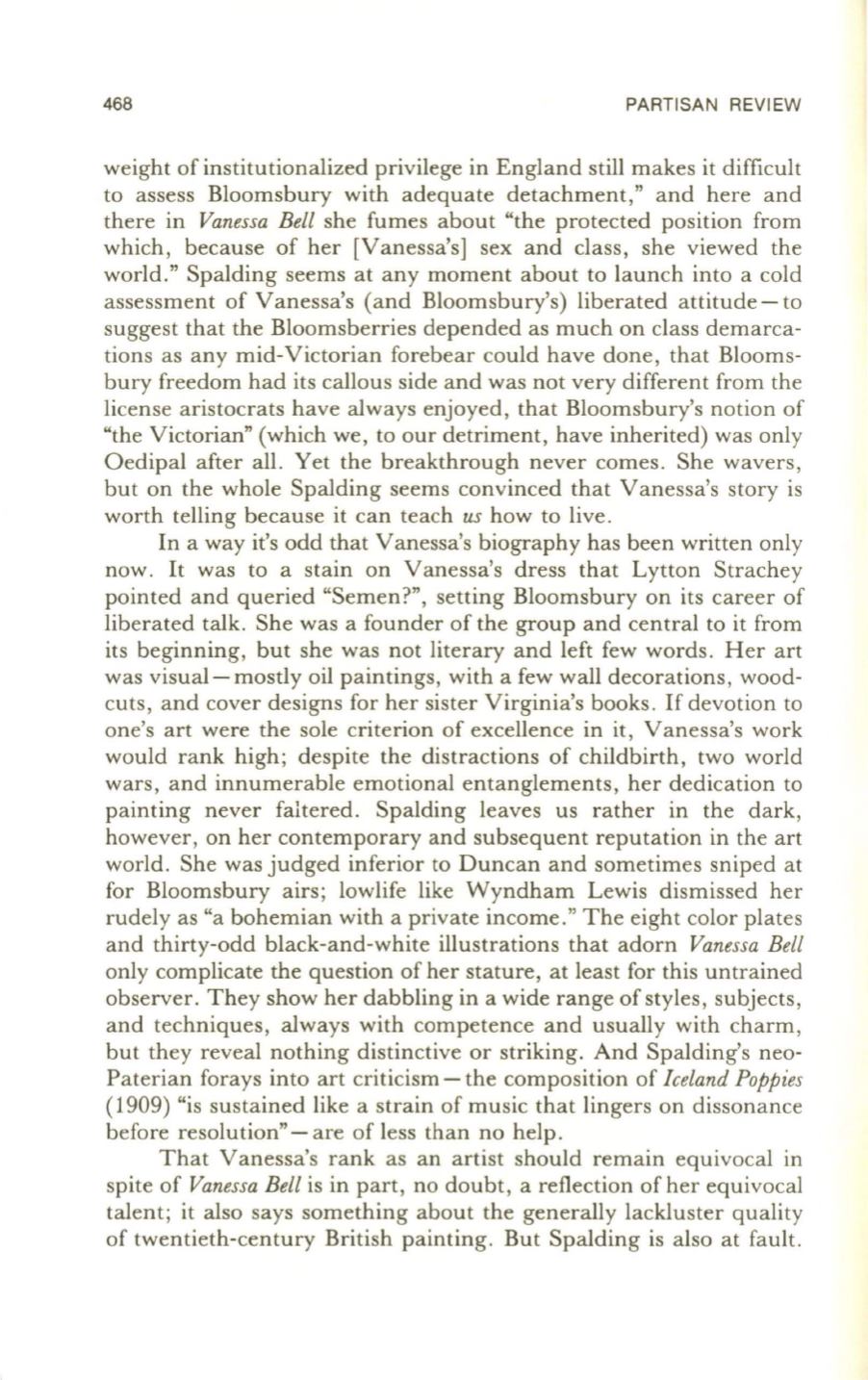
468
PARTISAN REVIEW
weight of institutionalized privilege in England still makes it difficult
to assess Bloomsbury with adequate detachment," and here and
there in
Vanessa Bell
she fumes about "the protected position from
which, because of her [Vanessa's] sex and class, she viewed the
world." Spalding seems at any moment about to launch into a cold
assessment of Vanessa's (and Bloomsbury's) liberated attitude - to
suggest that the Bloomsberries depended as much on class demarca–
tions as any mid-Victorian forebear could have done, that Blooms–
bury freedom had its callous side and was not very different from the
license aristocrats have always enjoyed, that Bloomsbury's notion of
"the Victorian" (which we, to our detriment, have inherited) was only
Oedipal after all . Yet the breakthrough never comes. She wavers,
but on the whole Spalding seems convinced that Vanessa's story is
worth telling because it can teach
us
how to live.
In a way it's odd that Vanessa's biography has been written only
now .
It
was to a stain on Vanessa's dress that Lytton Strachey
pointed and queried "Semen?", setting Bloomsbury on its career of
liberated talk. She was a founder of the group and central to it from
its beginning, but she was not literary and left few words . Her art
was visual- mostly oil paintings, with a few wall decorations, wood–
cuts, and cover designs for her sister Virginia's books .
If
devotion to
one's art were the sole criterion of excellence in it, Vanessa's work
would rank high; despite the distractions of childbirth, two world
wars, and innumerable emotional entanglements, her dedication to
painting never faltered. Spalding leaves us rather in the dark ,
however , on her contemporary and subsequent reputation in the art
world. She was judged inferior to Duncan and sometimes sniped at
for Bloomsbury airs; lowlife like Wyndham Lewis dismissed her
rudely as "a bohemian with a private income ." The eight color plates
and thirty-odd black-and-white illustrations that adorn
Vanessa Bell
only complicate the question of her stature, at least for this untrained
observer. They show her dabbling in a wide range of styles, subjects,
and techniques, always with competence and usually with charm ,
but they reveal nothing distinctive or striking. And Spalding's neo–
Paterian forays into art criticism - the composition of
Iceland Poppies
(1909) "is sustained like a strain of music that lingers on dissonance
before resolution" - are of less than no help.
That Vanessa's rank as an artist should remain equivocal in
spite of
Vanessa Bell
is in part, no doubt, a reflection of her equivocal
talent ; it also says something about the generally lackluster quality
of twentieth-century British painting. But Spalding is also at fault.


